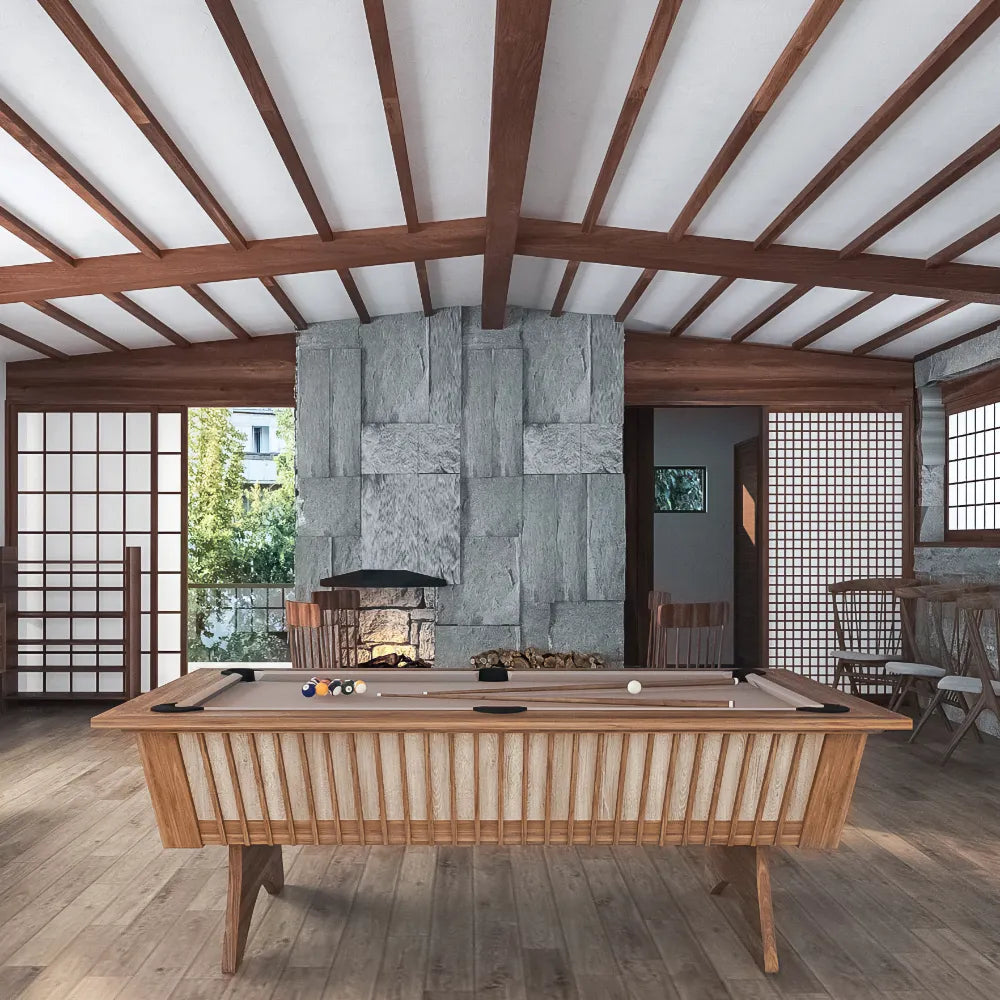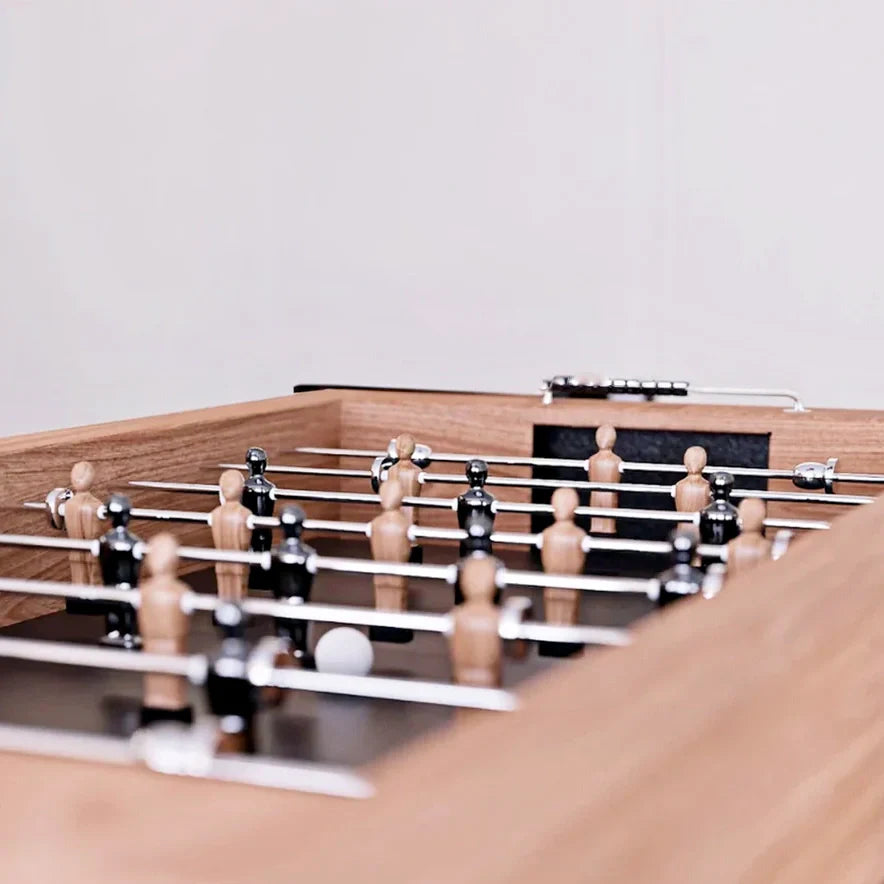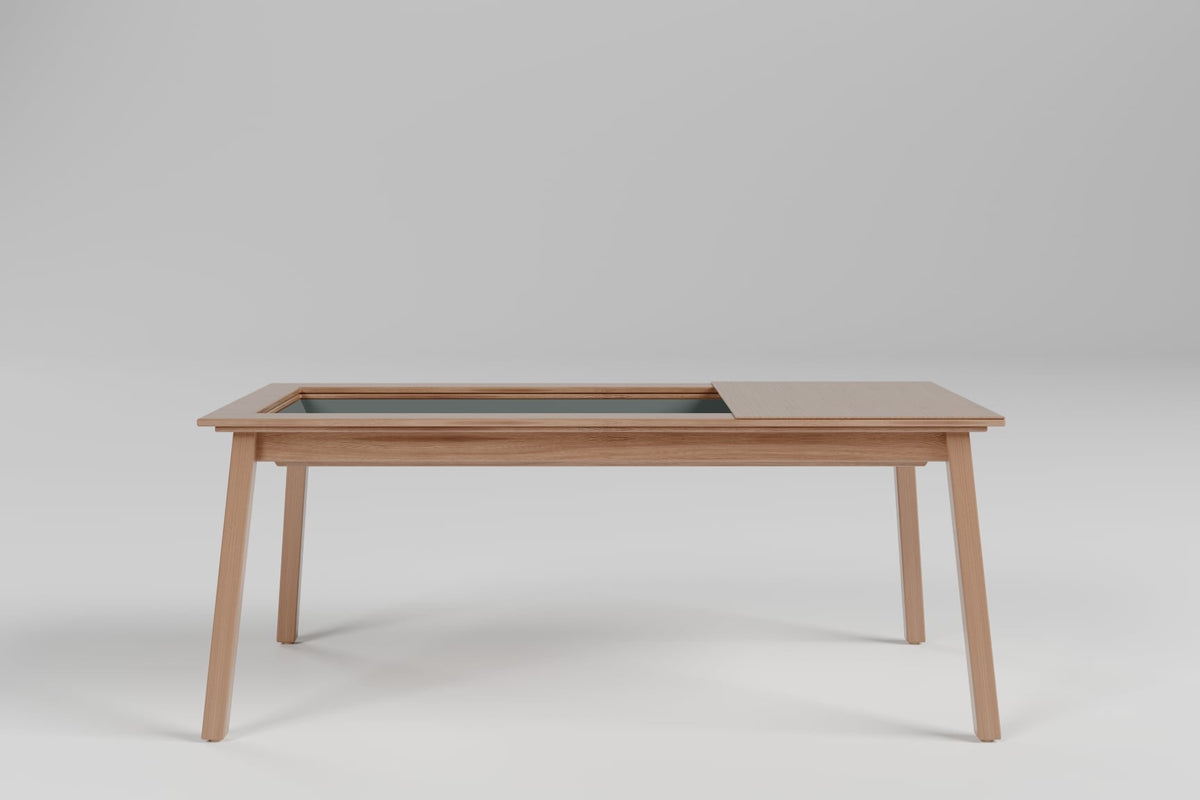There's a certain magic to owning a pool table. It's more than just a piece of furniture; it's a gathering spot, a source of friendly competition, and a constant invitation to hone your skills. While a brand-new table is a dream for many, the savvy enthusiast knows that a pre-loved gem can offer incredible value. But unlike buying a used couch, picking up a used pool table requires a keen eye and a bit of insider knowledge.
This isn't about saving a buck; it's about finding a quality table that will bring years of enjoyment without turning into a money pit. So, before you commit to that Craigslist special or estate sale find, let's talk about what truly matters.
The Foundation of the Table: The Slate
When it comes to a pool table, the slate is everything. It's the foundation of your game, and its condition dictates the true roll of the ball. Most quality tables use natural slate, usually Italian, Brazilian, or Chinese, cut into one or three pieces.
- One-Piece Slate: Typically found on smaller tables (7-foot and sometimes 8-foot), a one-piece slate offers a perfectly seamless playing surface. However, they are incredibly heavy and challenging to move.
- Three-Piece Slate: Common on larger tables (8-foot and 9-foot), three-piece slate is easier to transport and level, as each piece can be shimmed independently during installation. The seams are filled and covered by the felt, making them imperceptible when properly installed.
What to look for: Inspect the slate for any signs of cracks, chips, or bowing. Run your hand across it. Even a hairline crack can severely impact play and is often irreparable. Major warpage is also a deal-breaker. A good slate is a flat slate, and that's non-negotiable. You can also lightly run your hand over the surface to feel for imperfections.
The Playing Surface: Cloth Condition
The felt, or billiard cloth, might seem like an easy fix, but its condition can tell you a lot about how the table was maintained.
- Type of Cloth: High-quality tables often use a wool-nylon blend felt, which provides a smooth surface and better durability. Lower-quality felt may wear out quickly.
- Signs of Wear: Look for tears, rips, excessive pilling, or faded areas. While minor tears can sometimes be patched, a heavily worn or damaged cloth will need replacing. Factor in the cost of new felt and professional installation (which isn't cheap) if the cloth is in poor shape. A dirty cloth can sometimes be cleaned, but permanent stains or "ball tracks" indicate heavy use and potential underlying issues. If the cloth moves or shifts with just a light press, or if you notice that the balls slow down more than usual, the cloth is likely too loose.
Beyond the Surface: Rails and Cushions
The rails and their rubber cushions are critical for a consistent and lively bounce. Worn-out cushions lead to dead spots and unpredictable angles, making the game frustrating.
- The "Bounce Test": Gently push down on the rails to check for any looseness or give. Then, with a cue ball, gently roll it into each rail with moderate speed. The ball should rebound consistently and with good energy. If the ball dies quickly, bounces erratically, or makes a dull thud, the cushions are likely hardened or degraded and will need replacing. This is a common issue with older tables and can be a significant expense. Cushions typically last between 10 and 15 years, but can age naturally even with little use.
- Rail Condition: Check the rails for any warping, dents, or damage to the wood. These can affect the alignment of the cushions. The rails should be firmly attached to the slate with no gaps.
Structural Integrity: The Frame and Legs
The frame is what supports the heavy slate, and the legs keep the entire table stable and level.
- Material: Look for solid wood construction (hardwoods like oak, maple, mahogany are ideal) or sturdy composite materials. Avoid tables made primarily of particle board or thin veneer, as these may not hold up to the weight of the slate over time.
- Stability: Give the table a good shake. Does it wobble? Are the legs sturdy and securely attached? Any significant movement indicates a problem with the frame or leg joinery. A good quality frame with crossbeams is necessary for thicker slabs of slate.
- Leveling System: Check if the legs have adjustable feet or shims. This is crucial for precise leveling during installation. Most high-quality tables have built-in leveling systems.
- Overall Condition: Look for signs of water damage, rot, or major repairs. A table that has been subjected to moisture can have warped components or weakened joints.
Pockets and Aesthetics
While not as critical as the slate or rails, the pockets and overall look contribute to the table's appeal and functionality.
- Pocket Type: Leather pockets are classic and durable, but check for tears or loose stitching. Ball return systems (where balls collect in a tray at one end) are convenient but can be prone to jamming if damaged.
- Appearance: Scratches, dents, or faded finishes on the wood frame are often cosmetic and can be refinished. However, deep gouges or structural damage are more concerning. Ensure all pocket liners are intact and securely fitted.
Hidden Costs: Disassembly, Transport, and Reassembly
This is perhaps the biggest overlooked factor when buying a used table. A pool table is not a piece of furniture you just load into a truck.
- Professional Movers are Key: Unless you are a professional billiard technician, do not attempt to move a slate table yourself. Slate is incredibly heavy and fragile. Improper handling can crack the slate or damage the frame.
- Cost: Get quotes for professional disassembly, transport, and reassembly before you buy the table. These services can add hundreds, sometimes over a thousand dollars, to the total cost, depending on distance and complexity. The average cost to move a pool table is about $650, but can range from $300 to $4,000 depending on factors like size, distance, and stairs. Factor this into your budget. This isn't just a delivery; it's a specialized installation. Disassembly and reassembly can cost between $75 and $200 as an additional fee, though some movers include it in their regular rates.
Testing it Out: A Quick Playtest
If possible, try to shoot a few balls on the table. This is the best way to feel the cloth, test the cushion bounce, and get a general sense of the table's levelness. Even a short play session can reveal issues that might not be obvious from a visual inspection alone. Pay attention to how the ball rolls – does it drift consistently in one direction, indicating a severe unlevel condition? You can also use a spirit level to check for levelness in various areas of the table.
Don't Forget the Accessories
While the table itself is the main event, don't forget to ask about any included accessories. Often, sellers will include cues, a bridge stick, a set of balls, a triangle, and brushes. While these might not be top-tier, they can save you from immediate purchases. Just be sure to check their condition.
Buying a used pool table can be a truly rewarding experience, allowing you to get a high-quality piece at a fraction of the new price. By knowing what to look for and understanding the logistical challenges, you can make an informed decision and bring home a table that will provide endless hours of enjoyment for years to come.






0 comments